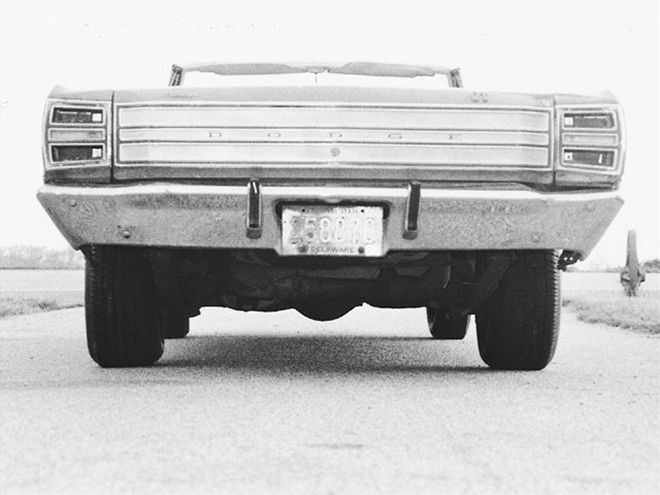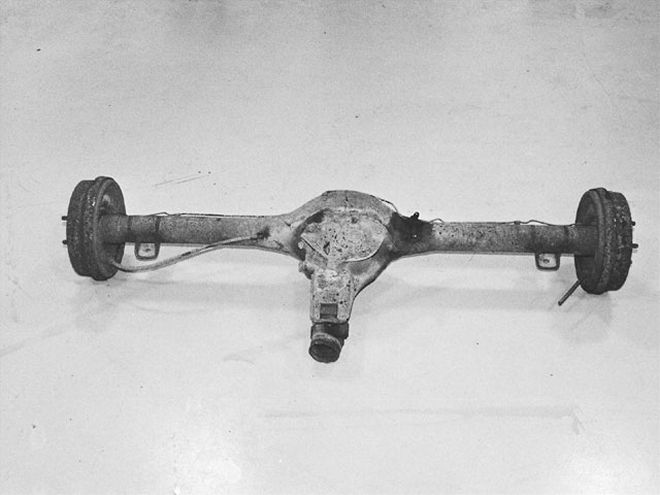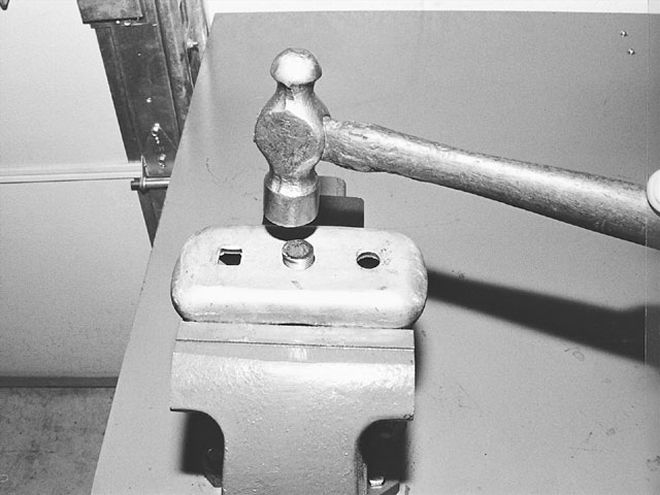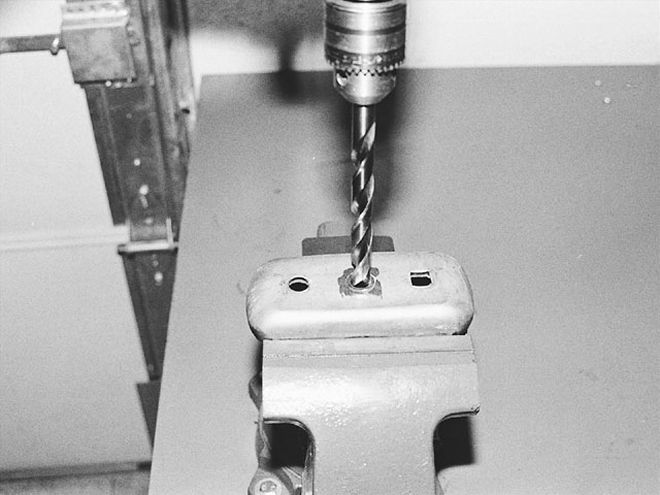

If you've ever considered upgrading the spindly 7 1/4-inch axle that likely resides under your A-Body, you probably already know that A-Body 8 3/4 rear axles are not very plentiful these days. They can still be found at swap meets and on eBay from time to time, but the chances of finding one during a stroll through the local junkyard are slim. Generally, when you do find one, the price reflects its desirability and rarity.
We were faced with this dilemma when planning a big-block swap into a Slant Six powered '68 Dart GT convertible. Then, when a friend tossed a B-Body 8 3/4 axle our way, we broke out the tape measure and began comparing. Granted, the B-Body axle is wider than the A-Body piece, but could it be made to work?
Once the axle housing was stripped of all its parts and the inside was cleaned, we cut the left-side perch from the axletube. Upon comparing the old perch with the new Mopar Performance PN P4120074, we found that the locating hole in our new perch was 5/8 inch in diameter, while the hole in our original perch measured 1/2 inch. Unless we made a spacer to fill the gap between the centering pin on the spring and the hole in the perch, the axle would not be properly located on the leaf springs. We cut 5/8 inch from each end of a short 3/8-inch steel pipe nipple and welded these small pieces into our new perches, ground them flush, then drilled them to 1/2 inch. Mopar Performance now offers leaf-spring perches with the correct 1/2-inch diameter hole, so be sure to check your application.
 This is a typical junkyard B-Body rear in all its grimy splendor, freshly torched from a '69 Satellite.
This is a typical junkyard B-Body rear in all its grimy splendor, freshly torched from a '69 Satellite.
While at first it may seem ludicrous to even think of such a swap, there are a couple of good reasons to consider it. Aside from the aforementioned rarity and price tag of an A-Body unit, all A-Bodies through 1972 used a four-inch lug circle. The '73 through '76 A-bodies with disc brakes came with the same 4 1/2-inch lug circle that the larger cars had. Since the 8 3/4 was dropped from the A-Body at the end of 1972, all factory A-Body 8 3/4 axles have the small four-inch lug circle. Not only has the availability of aftermarket wheels in a four-inch lug circle always been a problem, but many owners of '72 and earlier A-Bodies choose to retrofit disc brake setups from '73 and later donor cars. Unless you want to carry two spare tires, you will need a pair of after-market axle shafts for your A-Body axle, but with flanges sized for the larger 4 1/2-inch lug circle. Custom axle shafts of this configuration are available, but they are sometimes costly, further raising the cost of retrofitting the beefier rear axle.
The B-Body 8 3/4 axle housing remained the same from 1962 through 1970. they are still more plentiful than the A-Body axles because nearly every B-Body built received one. Through 1964, the B-Body rear brake-drums and hubs were retained to the axle shafts via a large nut on each side. The '65 through '70 B-Body axles have shafts with the familiar flanges and slip-on drums, and this later style axle is the one you want.
The '63 through '72 A-Body 7 1/4 axle measures 53.2 inches from axle flange to axle flange, while the '62 through '70 B-Body 8 3/4 axle measures 55.0 inches from axle flange to axle flange. In addition, the leaf-spring center to center spacing of the B-Body axle is 44 inches, one inch wider than the 43-inch A-Body dimension. Not only would we have to address the 1.8-inch difference in overall width, we would have to cut off the leaf-spring perches and weld on new ones before the axle would mate to the leaf spring. Because of the extreme heat involved with cutting and welding, we drained the gear oil and cleaned the residue from the axle housing in order to avoid risking a fire or cooking the gear lube. The best way to do this is to disassemble the axle and clean the inside of the housing with solvent.
 We then tapped a spacer into the bottom of each perch and welded it from the top.
We then tapped a spacer into the bottom of each perch and welded it from the top.
Next, we placed a large wooden block under the perch on the right-side axletube and another block under the left-side axletube where the perch used to be. Because of the one-inch difference in leaf-spring spacing between the A-Body and B-Body, we had to locate each of our new perches inward 1/2 inch on each side from the factory location. We placed a new perch between the left side axletube and the wooden block and positioned it 43 1/2 inches from the right-side perch. (Measuring from the inside edge of one perch to the outside edge of the other yields the same reading as measuring from center to center, and it's a lot easier.) Using wooden blocks or cinder blocks, and doing one perch at a time assures that the new perches will be angled at the same orientation around the axletube as the original ones. This way, the rear U-joint angle will remain the same when finished. We scribed the perch's location on the axletube and then welded it to the tube. Next, the right-side perch was removed, and the new one positioned 43 inches from our left-side perch, again using the wooden blocks. Once we marked its location, it too was welded on.
 We ground the spacers flush, then drilled the centers with a 1/2-inch bit so they would properly index the axle to the locating pins/center bolts of the leaf springs.
We ground the spacers flush, then drilled the centers with a 1/2-inch bit so they would properly index the axle to the locating pins/center bolts of the leaf springs.
With our new perches properly positioned and welded in place, it was time to reassemble our axle. Upon completion of our rear axle swap, we had a pair of 14x5 1/2-inch Rallye wheels widened 2 1/2 inches to the inside. Then we mounted and balanced a pair of P245/60R14 tires on our new 14x8-inch wheels. They fit nicely within the narrow confines of the Dart wheelwells.
Although we chose to widen the Rallye wheels, the availability of aftermarket wheels is excellent these days. if we had chosen to go that route, we simply would have ordered wheels with the desired offset. If we were working with a Duster, Demon, Dart Sport, or a '67 through '69 Barracuda, the open rear wheelwells would have afforded more space, and the clearance wouldn't have been as much of an issue as on our Dart. Once the axle is installed, the rear U-joint angle should be checked with a driveshaft angle gauge.